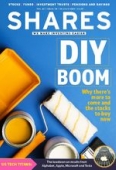Archived article
Please note that tax, investment, pension and ISA rules can change and the information and any views contained in this article may now be inaccurate.
Big buying opportunity at Avon Protection

For a defence and protection kit designer and manufacturer Avon Protection (AVON) stock hasn’t provided investors with very much of either during the past year. But we believe this is a temporary blip that has created an excellent buying opportunity for investors to gain access to what has been a high returns story for years.
Analyst consensus sees scope for 29% upside to £34.80 if the company gets its recovery bang on.
You may not recognise the company but Avon Protection has roots that date back to the rubber boom of the late 1800s under its old name Avon Rubber, a change made earlier this month. From car tyres and conveyor belts, its got into safety kit during the Second World War where it made many of the millions of gas masks supplied to Brits.
These days the FTSE 250 company concentrates exclusively on the design and production of life critical personal protection systems. Effectively it makes masks and respiratory systems and builds ballistic body armour for militaries and security services across the world.
This is a high-margin, high-returns, cash-generative business that we believe is well positioned in markets underpinned by, sad to say, long-term growth drivers.
We must all face the fact that the world is a place where terrorists, extremist groups and even some governments are increasingly prepared to use explosives, chemical and biological agents and other frightening tools of destruction on populations at large. This means that demand for the type of advanced respiratory protection systems and ballistic equipment that Avon manufactures is only likely to rise.
 FAILED TESTS AND CONTRACT DELAYS
FAILED TESTS AND CONTRACT DELAYS
Avon’s recent problems started just before Christmas when it was forced to admit a hit to 2021 performance because of delays on an important US Army defence deal.
Initial deliveries under the company’s contracts for the US Defence Logistics Agency Enhanced Small Arms Protective Inserts and US Army Vital Torso Protection body armour were supposed to start early in 2021 but they have not been knocked into 2022 after some of the bits of kit failed initial tests.
Making matters worse, Avon also had to own up to the fact that a protest against its sole source contract to provide the US Army with ‘Next Generation Integrated Head Protection Systems’ means that there will be no meaningful revenue from that this year.
Yet analysts at investment bank Berenberg remain hopeful that lost income this year can be made up. ‘The order book ($155 million) makes up circa 50% of the shortfall, with military orders contributing around 25% and run and repeat orders with short turnaround times from Team Wendy (a recently acquired business) and First Responder customers delivering the final 25%,’ they say.
This does leave this year (to 31 December) second half weighted, a risk that some investors may feel uncomfortable taking despite management’s optimism.
END OF THE DOG DAYS
Since early December 2020 the share price has been a proverbial dog, slumping from £46.25, because of the contract delays. This means that while £1,000 invested in a low-cost FTSE 100 tracker would now be worth £1,185.70, an equivalent sum put into Avon stock would have been whittled down to just £789.
Yet the difference between one-year and five-year returns is like night and day, with Avon’s shares generating an average 26.4% a year return for investors over the longer timeframe, based on Morningstar data. The FTSE 100’s equivalent is just 4.89%. Compound these returns and the wealth creation gap becomes cavernous.
It’s the same story over 10 years, with the UK’s benchmark index’s average yearly 5.65% and Avon’s 25.6% widening the compounded returns gap to Grand Canyon-like proportions.
News to look out for includes new testing of the body armour contract, with the product line now thoroughly reviewed, redesigns and modifications pushed through. Success here cannot be guaranteed but if solutions are approved it would be major catalyst for the market to rethink the stock’s valuation.
The forward price to earnings ratio has fallen from more than 40 to the current 23, according to Refinitiv data. The risks have not disappeared entirely but they do seem much less threatening now. With Avon continuing to pull in new orders and just $13 million of net debt, it has scope for valuing-adding acquisitions over the coming months also.
Important information:
These articles are provided by Shares magazine which is published by AJ Bell Media, a part of AJ Bell. Shares is not written by AJ Bell.
Shares is provided for your general information and use and is not a personal recommendation to invest. It is not intended to be relied upon by you in making or not making any investment decisions. The investments referred to in these articles will not be suitable for all investors. If in doubt please seek appropriate independent financial advice.
Investors acting on the information in these articles do so at their own risk and AJ Bell Media and its staff do not accept liability for losses suffered by investors as a result of their investment decisions.
Issue contents
Editor's View
Feature
Great Ideas
- Why now is a great time to buy Hotel Chocolat
- Big buying opportunity at Avon Protection
- Big upgrade for FTSE 100 group Croda as new strategy pays off
- SDI continues to reward loyal retail investor fans
- Morgan Sindall surges on latest earnings upgrade
- Coca-Cola posts strong growth and continues to take market share

 magazine
magazine








